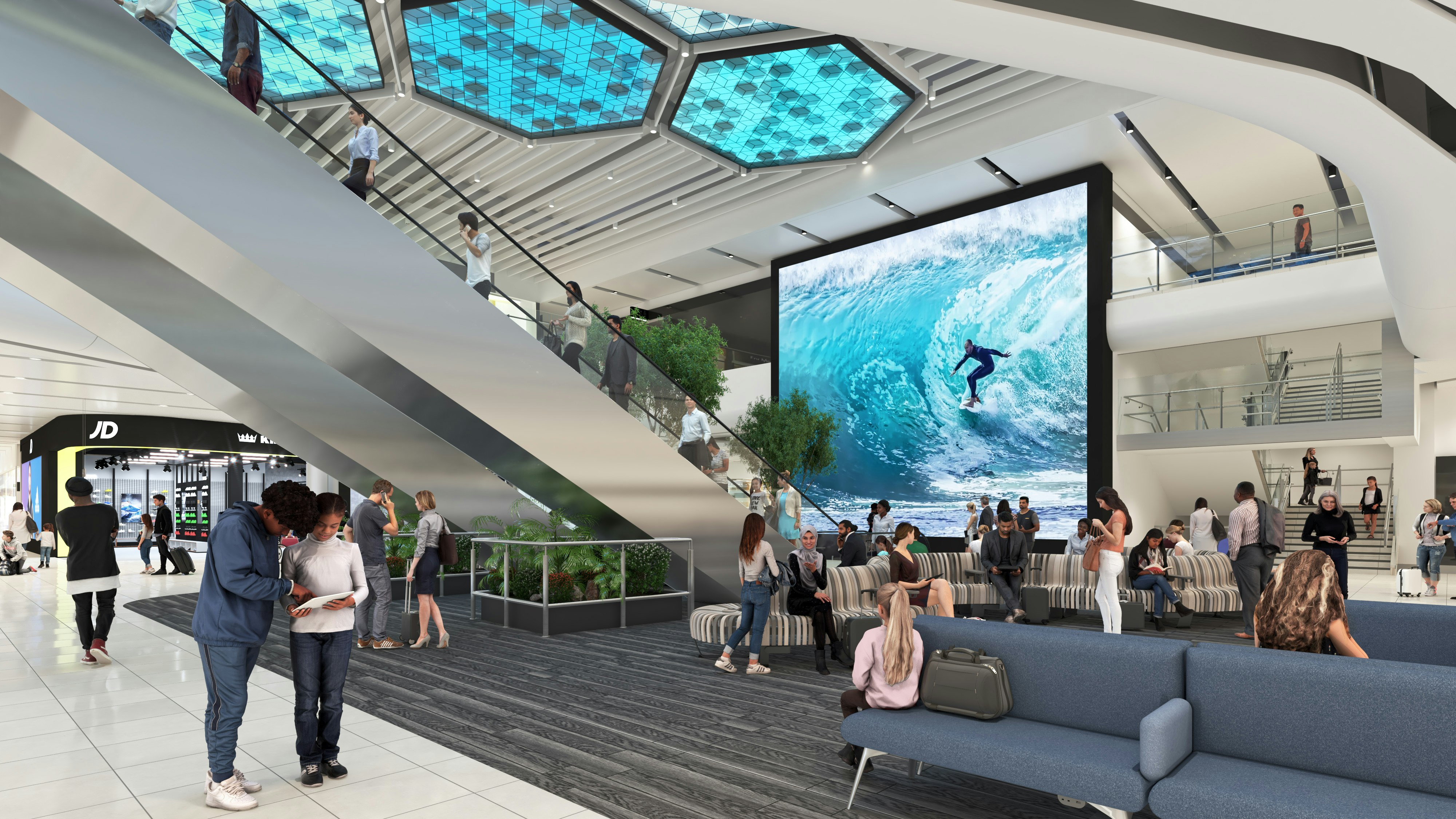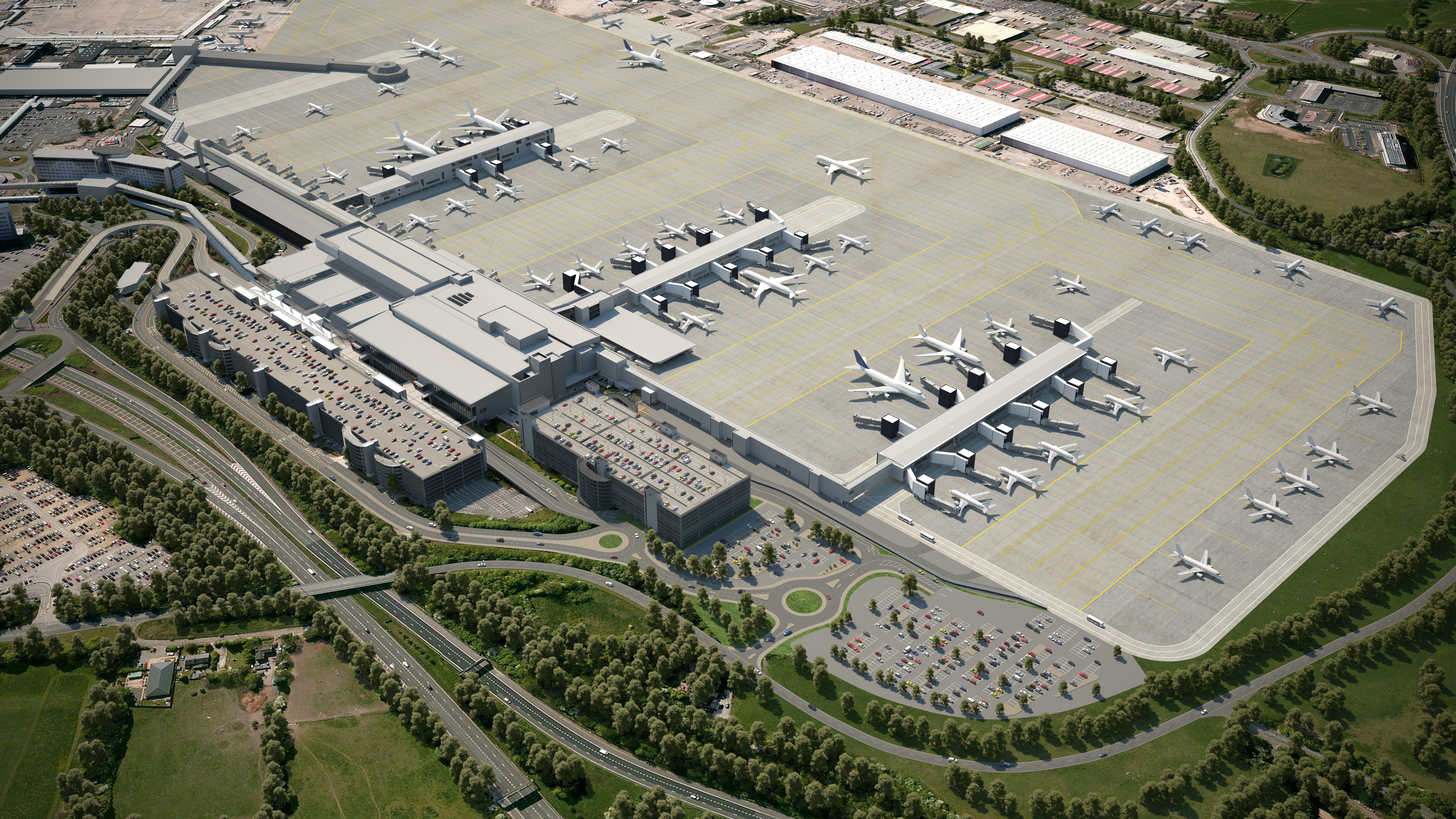Transforming Manchester Airport

As Manchester Airport’s new Terminal 2 is set to open next year, we reflect on the £1bn redevelopment of the UK’s third largest airport, which is transforming the location in to a key global gateway to meet the evolving needs of both passengers and airlines.
The Manchester Airport Transformation Programme (MAN-TP) is the most significant investment ever made by the airport. The 10-year redevelopment comprises a series of 60 enhancements that combine a contemporary look and feel with the latest technology and services, to create a smooth and seamless passenger experience.
It sees Terminal 2 more than double in size to become the airport’s main centre of gravity, with new piers, aircraft stands, new forecourt areas and multi-storey car parks. As the showpiece of the development, the extension and reconfiguration of Terminal 2 boasts a series of generous double-height spaces and floor-to-ceiling glazed facades ensuring a bright, airy interior awash with natural light.
As design team leaders, Pascall+Watson have worked closely with Manchester Airports Group (MAG) since 2015 along with the main contractor, Laing O’ Rourke, to successfully design and deliver the project over a fast-paced programme.
The redevelopment started by redefining the masterplan to align more closely with the growth forecast and build programme. Pascall+Watson were subsequently appointed to implement the recommendations presented in our study, the conclusion of which provided an effective balance between realising passenger benefits, processing efficiencies, commercial realism and the need to accommodate the predicted forecasts within the constraints of the existing campus.
As one of the UK’s busiest airports, it has been crucial to minimise disruption to the airport’s ongoing operations and the local community throughout construction. To enable this, the combined delivery team carefully planned the complex programme through its design lifecycle and by phasing critical elements of the works, which benefited from working collaboratively to maximise the construction process.
The redevelopment is one of the largest construction programmes in the North of England, with over 1,300 people working on site at peak and over 150 apprentices engaged from a range of colleges and universities in the region.
As a leading transportation architectural practice, Pascall+Watson have provided Manchester Airport with a range of in-house specialisms including architectural design, airport planning, retail planning, wayfinding, product design and BIM. We have also played a crucial role in stakeholder management, helping the MAG team realise their requirements and those of their airline customers.
Our specialist aviation expertise has enabled us to create, what we believe is, an adaptable operational airport facility, to cater to evolving passenger, airline and security needs. The importance of flexibility in design has been highlighted by the Covid-19 pandemic and its rapid effect on health security and passenger numbers.
As passenger demand recovers, we expect the airport environment to be reshaped. The nature of airport design is about managing and identifying opportunities in change - whether it’s increased security after 9/11, low-cost airline trends, the emergence of executive travel offers or the development of smaller long range and carbon conscious aircraft – that is what makes aviation exciting.
The transformation programme provides Manchester Airport with an exciting and refreshing new terminal facility. We look forward to seeing how it adapts to the new aviation environment and how its passengers respond.